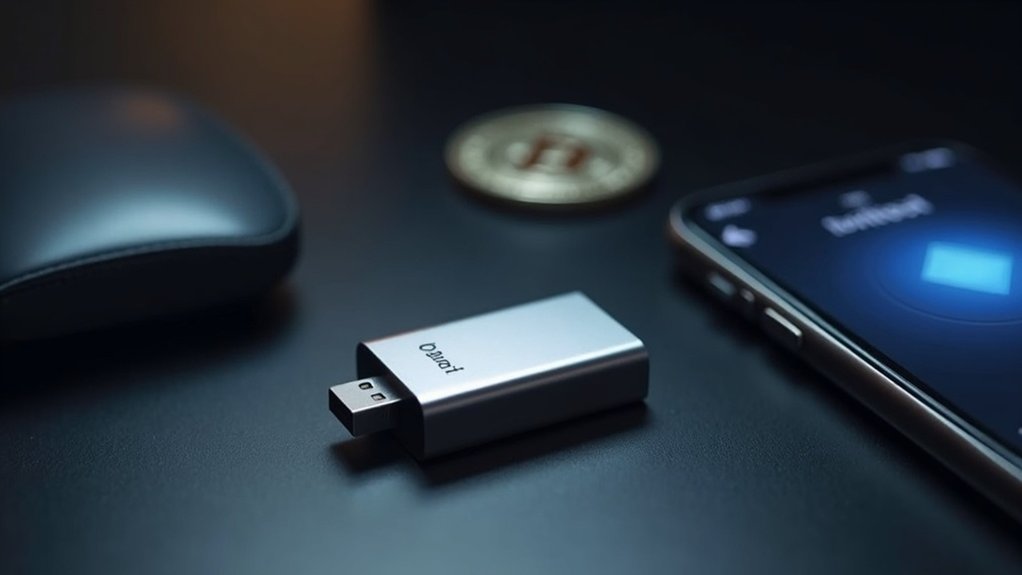Cryptocurrency trading starts with selecting a reputable exchange like Binance or Coinbase. Investors fund accounts through bank transfers or credit cards, then purchase digital assets similar to online shopping. Once bought, coins transfer to digital wallets. Traders choose between holding long-term or actively trading to capture price swings. Options include spot trading (direct ownership) or CFDs (betting on price movements). Market prices fluctuate wildly based on news and sentiment. The blockchain’s permanent nature means transactions can’t be reversed. Further details await the curious newcomer.
How exactly does someone jump into the wild west of cryptocurrency trading?
It starts with picking an exchange—Binance, Coinbase, or any platform that won’t vanish overnight with your money.
Security matters. A lot.
Once you’ve chosen, fund your account.
Credit card, bank transfer, whatever works.
Just know that credit card companies sometimes block crypto purchases. Because risk.
Technical analysis helps traders make more informed decisions.
Buying crypto is surprisingly mundane.
It’s basically online shopping for digital assets.
Click, confirm, done.
When you buy through exchanges, those coins land in your digital wallet.
Want to cash out? Convert back to regular money. Simple as that.
The coins are actually yours, unlike some financial products where you’re just betting on price movements.
Some people hold crypto for years.
Others flip it like pancakes.
Trading means constant buying and selling to catch price waves.
Holding means parking your assets and ignoring the daily drama.
Different approaches, different stress levels. Your call.
Prices swing wildly in crypto.
News breaks, regulations change, Elon Musk tweets—boom, market earthquake.
That’s just how it works.
Supply, demand, and mass psychology drive everything.
Predictable? Hardly.
Traders have options beyond just buying coins.
There’s spot trading—actually owning the asset.
Then there’s CFD trading—betting on price without touching the asset.
CFDs let you profit when prices fall, not just rise.
They’re leveraged too, meaning bigger potential gains and losses.
Many prefer this route to avoid wallet management headaches.
When executing trades, you’ve got choices.
Market orders execute immediately.
Limit orders wait for your price.
Stop-losses protect you when things go south.
The mechanics aren’t rocket science—specify how much, click the button, pay the fees.
It’s wise to start with small investments to learn the process before committing larger amounts.
Blockchain records everything permanently.
It’s the ultimate receipt.
No take-backs in crypto.
That’s just how it works with a decentralized digital record that isn’t controlled by any single authority.
That’s both terrifying and reassuring, depending on your perspective.
Frequently Asked Questions
How Do I Pay Taxes on Cryptocurrency Gains?
Cryptocurrency gains get reported on Form 8949 and Schedule D.
Traders calculate the difference between what they paid (cost basis) and what they got when selling (gross proceeds).
Short-term gains (held under a year) face ordinary income rates—up to 37%.
Long-term gains get better treatment—0%, 15%, or 20%.
Mining and staking? Ordinary income.
Everything needs reporting, even without a 1099 form.
Starting 2025, exchanges like Coinbase will report your trades.
No escaping the taxman here.
Can Cryptocurrencies Be Used for Everyday Purchases?
Yes, cryptocurrencies can be used for everyday purchases, though it’s still limited.
Over 40,000 crypto ATMs exist worldwide, and merchant acceptance grew 55% in 2023.
Bitcoin and Ethereum process hundreds of thousands of daily transactions.
Reality check: it’s less than 1% of global e-commerce.
Speed and fees remain issues for Bitcoin micropayments.
El Salvador leads adoption with 70% of its population using crypto.
Most owners? Still treating it more like an investment than actual money.
What Security Measures Protect My Cryptocurrency Investments?
Cryptocurrency security relies on multiple layers.
Hardware wallets store keys offline—they’re practically unhackable.
Exchanges? The good ones use cold storage and two-factor authentication.
Smart investors never keep everything in one place.
Network security includes encryption and transaction verification.
And then there’s the human factor.
Phishing scams are everywhere.
Monitoring accounts for suspicious activity is vital.
Bottom line: security measures exist, but investors must actively implement them. No system is foolproof.
How Do Cryptocurrency Prices Correlate With Traditional Financial Markets?
Cryptocurrency and traditional market correlations have evolved dramatically.
Once independent, Bitcoin now shows positive correlations with commodities and stocks—especially since 2020 when correlations jumped from near-zero to 0.4+.
Market stress? Correlations surge.
COVID proved that.
Bitcoin’s volatility (3-5x that of equities) makes it an amplifier of market movements.
Institutional investors are changing the game too.
As banks and Wall Street pile in, crypto and traditional markets become increasingly linked.
Simple fact.
What Environmental Impacts Do Cryptocurrency Mining Operations Have?
Cryptocurrency mining is an environmental nightmare.
It devours electricity—32.3 terawatt-hours in just one year, mostly from fossil fuels.
The numbers are staggering: 85.89 million tons of CO2 emissions globally, 1.9 million Americans breathing extra pollution, and water consumption equivalent to what 300 million rural Africans use.
Mining operations poison air hundreds of miles away from actual facilities.
Planting forests the size of the Netherlands would be needed just to offset the damage.
Progress, huh?









